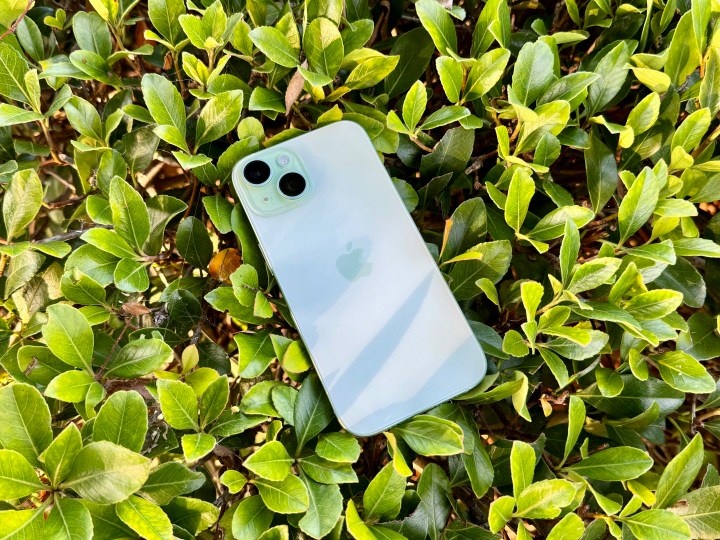
The iPhone 15 launch feels like it was just yesterday, but rumors of the iPhone 16 are already floating around. Some of the most recent have been bad news for enthusiasts, as it seems Apple is happy to stick with one of the more controversial elements of the iPhone 15: a 60Hz refresh rate.
While some people have dismissed this as tech-bubble griping that no one in the actual public cares about, there’s definitely some fire to go with all this smoke. A 60Hz refresh rate, while not criminal, is starting to look increasingly comical on Apple’s $799-plus smartphones. After all, almost every single Android smartphone priced at more than $500 now has a 90Hz or even 120Hz display — so why are two of Apple’s best smartphones languishing with objectively worse screen tech?
The thing is that I’ve been using an iPhone 15 for the last few weeks, and I really haven’t noticed a problem with the 60Hz display. As much as it annoys me to say, you’re all wrong — 60Hz on the iPhone is absolutely fine.
Higher refresh rates are great

I love higher refresh rates so much. I’ve spoken of my suffering with the Samsung Galaxy Note 20, and a big part of that was the 60Hz refresh rate. Not because I knew any different; I didn’t, not at that stage. No, it’s because I knew there was better out there. Other Digital Trends writers were raving about phones with refresh rates of 90 and even 120Hz, and using terms like “buttery smooth.” Here I was, with a miserable 60Hz screen, and not even a dab of buttery smoothness to be found.
Alright, so it was a big ol’ case of tech envy, but it didn’t help that the Galaxy Note 20 was such a big downgrade from the Samsung Galaxy Note 20 Ultra. It had worse screen tech, a downgraded camera, and various other little elements that were obviously and jarringly worse than those on the more expensive version of the same phone — all on a phone that was really quite expensive. Sound familiar? I was a little worried I would be facing the same situation on the iPhone 15.
60Hz is fine on the iPhone 15

As a real Android smartphone lover, and someone who lusted after higher refresh rates, it pains me to admit that, ugh, the iPhone 15’s refresh rate is fine.
Having used a 120Hz Google Pixel 7 Pro for the last year, I was fully expecting to notice the difference when Apple ignominiously bumped me down to 60Hz, but incredibly, I just … didn’t. Don’t get me wrong, if I put the Pixel 7 Pro and iPhone 15 side by side and dis some aggressive scrolling, there’s a clear difference between the two. But weirdly, I don’t tend to use my iPhone 15 alongside another phone, so it’s really not something I noticed in my everyday use.
But it’s odd, because I should notice. When using the Note 20, or any older phone, the lower refresh rate is obvious. How could it not be? Everything is coming at me twice as slow as I’m used to; that should absolutely make a visible difference.
Except, the Note 20 seems to have something the iPhone doesn’t: hitches. When using the software, every now and again, I hit a little snag. Nothing huge, just a small bit of lag that holds up the scroll for a tiny amount of time. It’s barely perceptible.

But barely perceptible is still perceptible, and I suspect here is where the difference lies. The iPhone 15 has never hit a snag, and has never been anything other than smooth as silk. That lack of lag makes a big difference in perception, and it’s entirely possible the raw power of Apple’s A16 Bionic is responsible for the 60Hz refresh rate feeling, well, unlike a 60Hz refresh rate. Because performance is so swift, so snappy, it makes up for the lost frames.
It’s not just me either. Digital Trends’ own Andy Boxall noted that the iPhone 15 Plus‘ 60Hz display felt a lot smoother than on the iPhone 14 Plus, and went as far as to call it the “the smoothest [60Hz display] you’ll see.” After a number of weeks with the iPhone 15, I’m inclined to agree.
I’m still not the world’s biggest iPhone fan, and my time with the iPhone 15 has proven how right I was in sticking with Android smartphones — but it has showed me that sometimes, you need to get a little closer to a phone than just reading a spec sheet. Sometimes 60Hz doesn’t feel like 60Hz, and on the iPhone 15, it really doesn’t. I’m still annoyed Apple is rumored to be using a 60Hz panel on the iPhone 16, but at least I can presume that it’s still going to feel fine.

